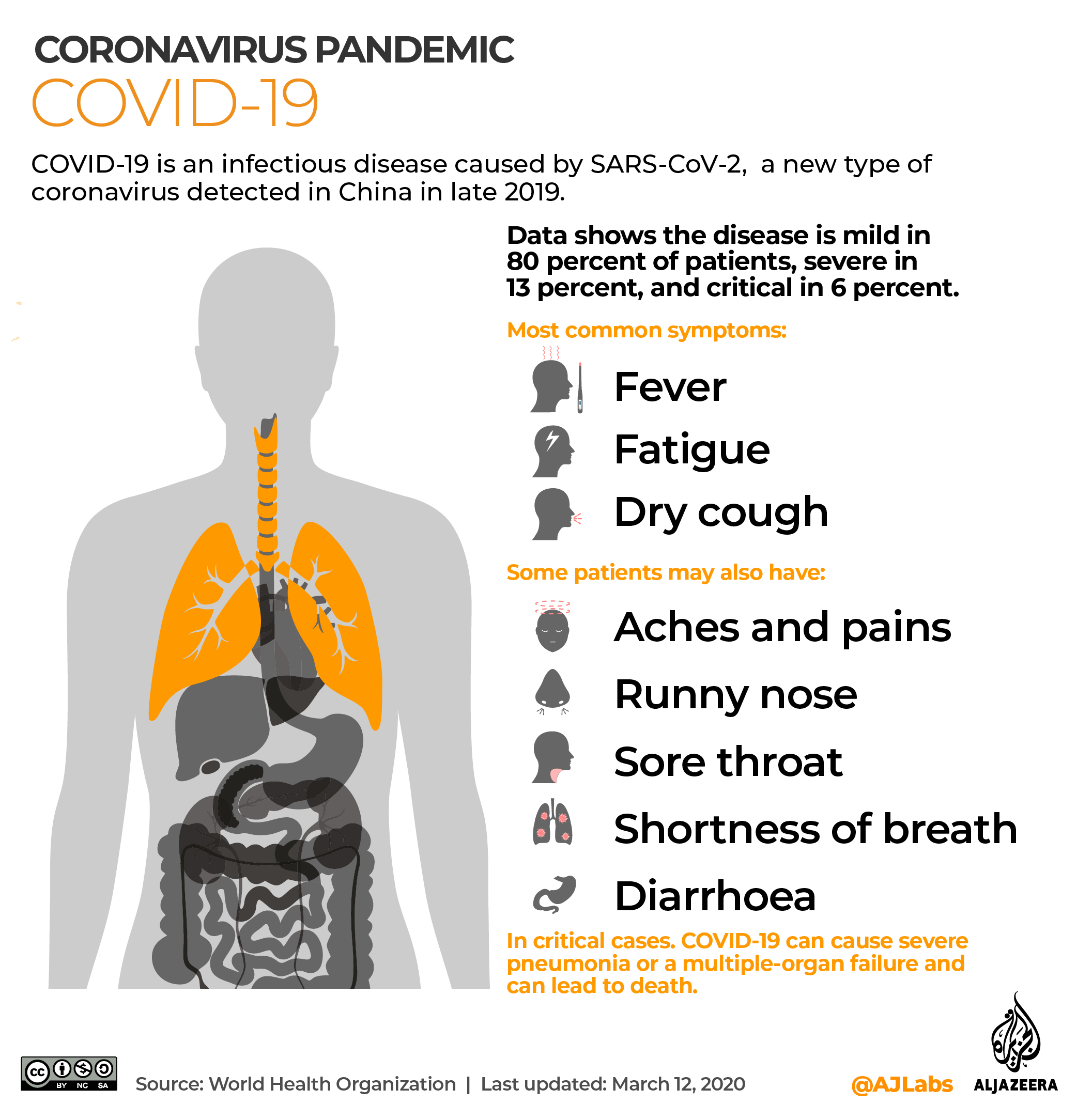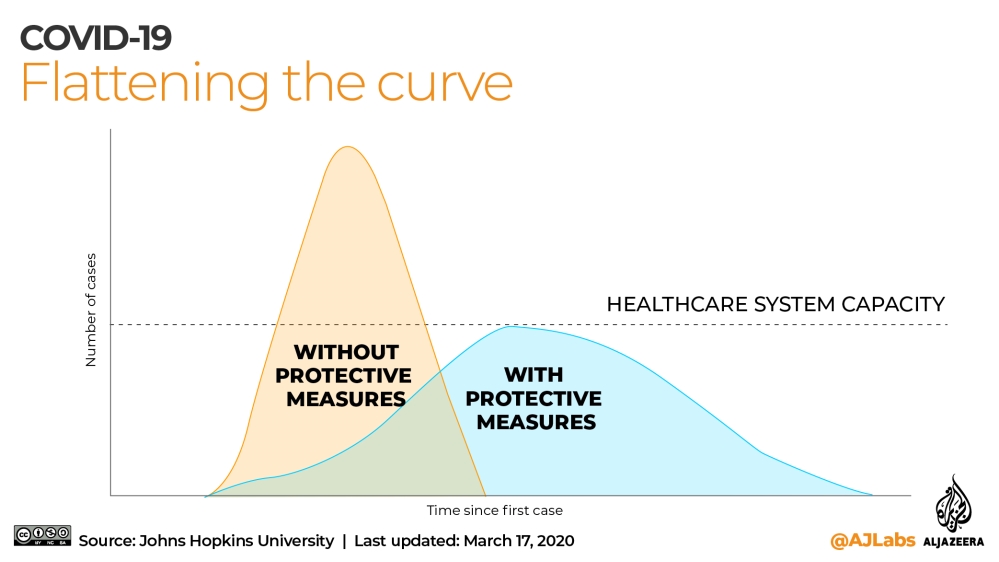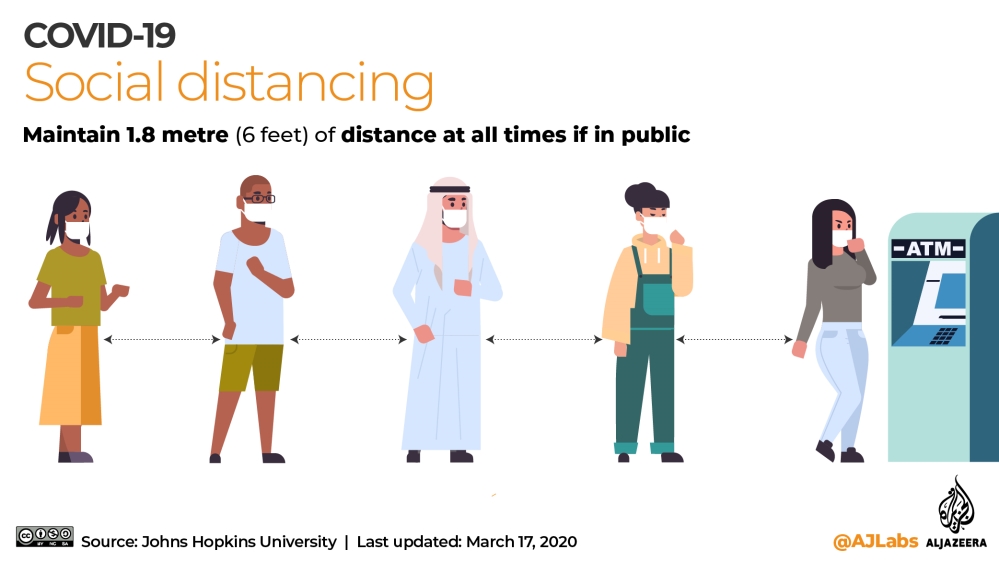What does coronavirus cluster mean? COVID-19 terms explained
We explain the jargon surrounding COVID-19 to help you understand the pandemic and how the world seeks to contain it.

The news has been dominated by the coronavirus pandemic, with advice flying around about “social distancing”, the dangers of “COVID-19” and why it is a great idea to “flatten the curve”.
You may be wondering what it all means, so we have broken it down for you in a list of the most commonly used terms and phrases:
Coronavirus: A family of viruses that cause illnesses ranging from the common cold to more severe diseases, including SARS and MERS.
Cluster: It refers to an aggregation of cases of a disease. A coronavirus cluster occurs when there is a concentration of infections in the same area at the same time.
In general, the World Health Organization (WHO) uses the following categories (PDF) to describe transmission patterns: sporadic cases, clusters of cases and community transmission.
Sporadic cases refers to a small number of cases (one or more) that are either imported or detected locally; clusters of cases refers to cases that are clustered in time, geographic location and or by common exposures; community transmission refers to larger outbreaks of local transmission that can be defined through different approaches, including big numbers of cases not linkable to transmission chains and multiple unrelated clusters in several areas.
SARS-CoV-2: The name given to the “novel” coronavirus that was first detected late last year in the Chinese city of Wuhan.
COVID-19: An acronym created by the WHO that stands for the respiratory disease caused by the novel coronavirus (SARS-CoV-2). It stands for “coronavirus disease of 2019“.

Close contact: Also referred to as “direct contact”, this is when one person is physically close enough to an infected individual to come into direct contact with their bodily fluids, including respiratory droplets through which COVID-19 is believed to be spread. In order to avoid being in direct contact with someone who may be infected, it is important to practice “social distncing”, see below.
Flattening the curve: Slowing a virus’s spread to lower the peak number of cases and related demands on hospitals and infrastructure.

Immunocompromised: People who have weakened or impaired immunity due to a chronic health condition, medication or malnutrition. Read more here.
Incubation: The incubation period is the time it takes for symptoms to appear after a person is infected. According to the WHO, most estimates of the incubation period for COVID-19 range from 1-14 days, most commonly around five days.
Pandemic: An epidemic that has spread over several countries/continents, usually affecting a large number of people.
PPE: Personal Protective Equipment, it includes, but is not limited to, medically approved gowns, aprons or coveralls, gloves, respirators, face shields and masks.
Quarantine: Separating and restricting the movement of people exposed (or potentially exposed) to a contagious disease.
R-naught or R0: An epidemiologic metric used to describe how contagious an infection is. In the case of COVID-19, research is still in its early stages, but indications suggest its R0 is between 2 and 2.5, which means an infected person will pass the infection on to a minimum of two other people.
Self-isolation: Isolation, as opposed to quarantine, is what someone who is confirmed to be ill with a communicable disease has to do to separate themselves from healthy people around them.
Self-quarantine: Staying home and away from other people as much as possible after exposure or potential exposure to an infection.
Social distancing: Any number of measures taken to increase the physical space between people to slow the spread of the virus. They include staying home more often, catching up with loved ones online instead of in person, strictly limiting the number of visitors to your home, and staying away from other people when you are in a public space. The WHO recommends being more than one metre (three feet) away from the nearest person, while some health experts have suggested maintaining a distance of at least two metres from others. Read more here.

Underlying condition: A long-term health issue, including asthma, diabetes, HIV, chronic lung disease, cancer and more. Read more here.